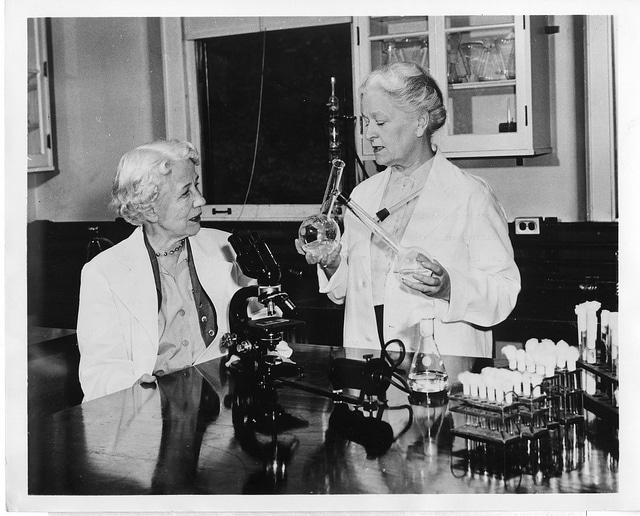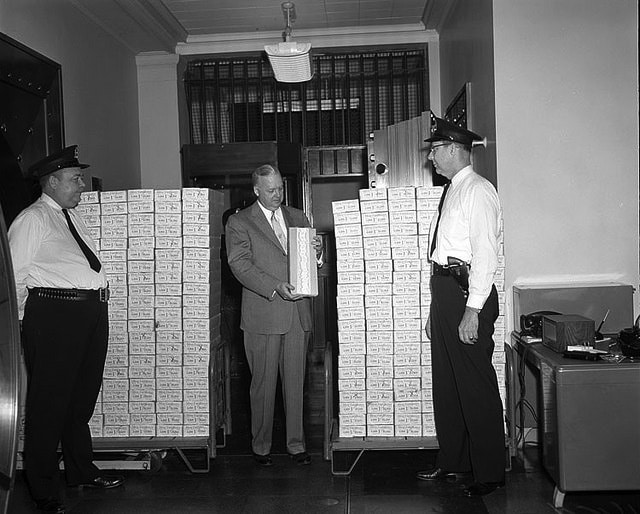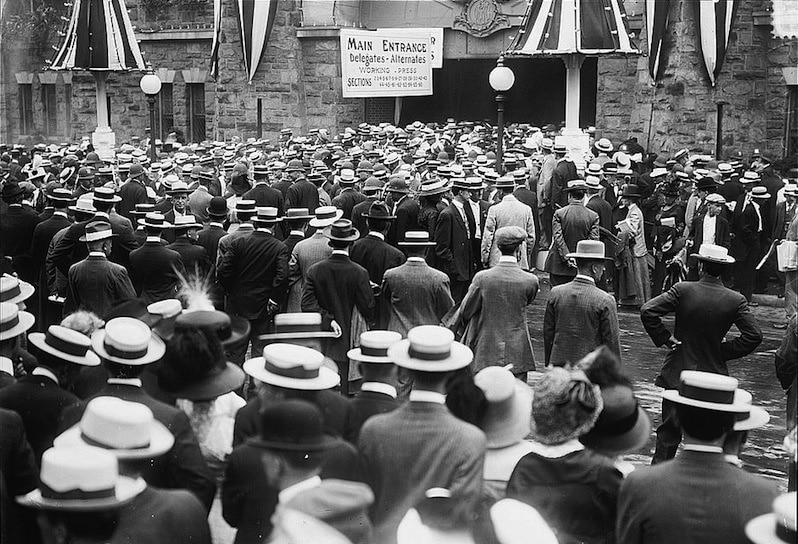How to Increase Event Attendance
Planning an event takes money, time and effort. And most likely blood, sweat and tears too. Even then it’s not over. You now have to turn your attention to filling the venue. A great speaker echoing around a half-empty event space is the stuff of nightmares.
You may have seen a whole raft of articles that attempt to give you top tips on increasing event attendance and they all tell you to do the following:
– Check the date doesn’t clash
– Choose a venue that’s easy to get to with good transport links
These are the givens, and with your experience and common sense, you’ve already done both of these. We’re here to provide you with those all important next level ideas to help ensure your event is well attended and a genuine success.
Research and Targeting

Image of Elizabeth Lee Hazen & Rachel Brown via Smithsonian Institution on Flickr
Step one involves the first rule of marketing. Know your audience. One of the main reasons events fail to fill seats is poor targeting. So think about the fundamentals first. What does my audience want? Is there an appetite for my event? Why should they go? Make sure your event’s value proposition meets the needs of your target audience and you’ve won half the battle.
It’s important to be flexible if your attendee list is looking a little anaemic. Consider whether you are targeting the right audience, and if there are other groups of people who’ll find your event valuable too. As well as this, you may want to consider:
– What will make them look good for attending?
– Does it reflect well on them personally?
– Would it look good for their business to share it socially?
So much of our online world is about looking good to others whether in our social circle or business area. Your event is no exception.
Once you know what would make your audience go to the event, you have to meet these requirements. You also need to communicate these reasons to them clearly in all of your marketing and promotion activity to reiterate the reasons they should go.
Pricing and Registration
Make saying YES fast and easy. Don’t charge too much for tickets, and consider offering discounts for groups.
Keep the registration process simple. If you’re main form of registration is online, make the form easy to complete. Only include essential fields (do you need to know their date of birth?), and make sure you can register multiple attendees at once.
Boost Attendance with an Early Bird Offer
An early-bird incentive is a steadfast method for securing initial registrations. Special offers, giveaways, discounts. Whatever the swag on offer, we all love a GOOD deal.
When creating your early-bird campaign, it’s important to keep your ideal attendee in mind. What would they want? Remember, this is not their first time at the registration-rodeo. When it comes to incentives, they’ve seen it all before. Increase your chances of capturing their attention by taking your lead from other successful early-bird campaigns aimed at the same audience as yours.
Remember, you have one, maybe two shots at creating the sense of urgency vital for a successful early-bird campaign so stick to your guns, and have a solid marketing plan. Meaning try and avoid too many extensions, they only enable fence sitters.
Promotion

Okay, we all know you need to promote an event if you want to get bums on seats. But you need to think very carefully about the channels you use, especially online. The methods you use to promote your event will mainly depend on four factors:
– Its purpose
– Your target audience
– The best ways to reach that audience
– Your resources
Promotion generally falls into three categories; owned media, earned media, and paid media. A blend of these is vital for spreading the word about your event.
Owned Media
Owned media is any channel that you directly control or own. Primarily this is your website and email list. There are two major advantages of using owned channels to promote your event:
– You don’t need permission
– It’s (mostly) free!
Website
The foundation of all your online promotion should be your website. Make it compelling for your target audience by including the following:
Who you are
Your event description should be clear, compelling and benefit driven. Include the topic, place, time, and indicate who should attend. If you have speakers at your event, include bios and pictures on your website too.
Content
Use the blog or news section of your site to curate compelling content relevant to your event. This could be interviews, whitepapers and previews to name a few. A well-populated blog not only helps your SEO, it helps keep your event visible to possible attendees.
Images
A picture is worth a thousand words. So select the images you use on your website with great care. A glorious image will increase engagement with your content 10-fold. They will be shown on social media networks whenever someone shares a link to your page.
Register Now!
Without a prominent call-to-action, you probably won’t get much action, so make your ‘register now’ button clearly visible on your page.
For information on getting your event online, take a look at our guide to event websites and platforms.
Direct mail
Although this channel has been somewhat overshadowed by the power of social media in recent years, in this industry, it is still considered one of the most cost-effective and efficient ways to promote your event. If you already have an email list, a good newsletter marketing plan can be an invaluable resource for boosting attendance to your event. Here are some of our top tips for you to consider when mailing your audience:
– Target and segment your list, tailor your content to suit the different needs of each group.
– Make your emails and landing pages mobile friendly
– Include a clear call-to-action – good CTAs give direction to your audience.
– Ensure your content is benefit led, why should they come to your event? Include special offers, giveaways and give them added value.
– Do not spam – do not alienate your audience by over-emailing, avoid spammy terminology
– Retarget and remarket – cookie people who have opened your email and serve them highly targeted adverts when they are browsing other sites on the web.
Earned Media
Earned Media is any promotion hosted and distributed by third party sites, normally without any payment involved. This includes social media channels, working with influencers and bloggers, and press mentions.
There are two major advantages of using earned media to promote your event:
– Potential to reach larger audiences
– It’s (mostly) free!
Social Media
Most talk around social media and increasing event attendance usually just says something along the lines of ‘make social media work for you’, ‘get the most out of social media’, ‘regularly push out your messaging on Twitter’. There is, however, more beyond the obligatory event hashtag. You must be authentic, transparent and engaging to earn attention for your event on social networks. People know you are there to market to them – Why should they care? Why should they share?
Don’t be afraid to use these sites for the purpose in which they where created, be social. It’s not enough to post event updates or ticket offers, you need to earn their attention. Create conversations, join conversations. Give your event credibility by creating a two-way dialogue with your audience.
Remember, handling a social media account is time consuming, so it’s good to be selective. It can be tempting to create loads of social media accounts for your event, just because everyone else is. However, if you’re not targeting your specific audience, it is generally a waste of time.
Listen first, and get a good understanding of your audience’s social presence. Then choose one or two channels relevant to your audience to focus your efforts on. How many business professionals do you see with their own Facebook page? Exactly. Use the following as your starting point for figuring out which channels are most relevant for your event:
When To Use Twitter:
– To connect with marketers and influencers (bloggers)
– If your event is technology-related (on average Twitter users are more tech-savvy and interested in innovation than the average user on other social networks)
When To Use LinkedIn
– To connect with people from a specific industry or field
– To market to business professionals
– If you’re organising a corporate event
When To Use Facebook:
– To connect with people in a non-work related capacity
– If you are not organising a business event (fundraisers, concerts, parties)
When To Use Instagram
– To connect with creative individuals
– If you’re organising a leisure event (food festival etc)
Now you’ve picked which social media channels to target make sure your social media accounts look good. Do they have the right sized and quality images? Are your profiles up to date?
Enable social sharing on your event site and registration page – use the official social media icons too as people are more likely to use these. If you are tech savvy then ensure that Facebook Open Graph tags and Twitter Cards are employed on your event pages to ensure that when your event is shared on social media it looks the best it can. For more read these tips on Facebook Open Graph Tags.
Bloggers and Influencers
If you already have a good relationship with a blogger or industry influencer who shares your target audience, it’s definitely a good idea to see if they will help you promote your event. Do tread with caution: it is becoming less and less common for bloggers to work for free. So, if you don’t already have established relationships do not contact bloggers for the sole purpose of getting them to promote your event. Building relationships with these people should be an on-going strategy for your business, but if don’t already have a blogger outreach strategy, inviting them along to your event as VIPs could be a good way of getting started.
Brand partners
Consider collaborating with businesses who share your target audience, not only could they sponsor your event, but they can also help you to increase event attendance.
Directories and Listings Sites
There are a number of good event listing sites that allow you to share your event details for free – it is well worth uploading the information to the most relevant sites.
Paid Media

Image via The Library of Virginia on Flickr
It’s time to grab your wallet. Paid media can be a far less time consuming way of reaching your target audience. There are a huge number of paid media channels available for you to utilise including; magazine and newspaper advertising, billboards, PPC, display advertising, retargeting, and sponsored posts on social media sites, to name a few. Here are our top tips for approaching your paid media strategy:
Choose the right channels
Dedicate your resources to targeting the channels popular with your target audience.
Set goals for your campaigns
Are you after leads? Conversions? Visibility? Ensure your paid promotion fulfils clear goals so as not to waste valuable budget.
Set a budget
It’s easy to get carried away with paid promotion, have a clear budget and stick to it to make sure you’re within your event’s margins.
Test and evaluate
Regularly check whether your paid campaigns are delivering the results you need them to.
As well as using a blend of these channels it’s important you start promoting your event early, and have a clear marketing plan from the beginning.
Create a Buzz
Sometimes this can be seen as about as real as conjuring up a unicorn. What is a ‘buzz’? And how the hell do you create one?
Buzz largely refers to people talking, discussing and commenting on your event without your direct influence. You want to be talked about on the Tube, in the pub, even around the apocryphal water cooler.
To create a buzz around your event, it’s all about how you promote it. Here are our top four tips for creating buzz-worthy content:
Headlines – not much needs to be said about the importance of a good headline.
Mystery can be a motivator – tease them with pieces of information, create intrigue.
Compelling visuals – there’s nothing more share-worthy than a glorious image. Pick images that make people feel good.
Call-to-actions – make it easy for people to share information about your event, and ask them too.
Use Technology
From gamification to enabling virtual attendance, there are plenty of ways technology can help boost audience attendance and engagement. Our Event Technology Guide give you an idea of the possibilities event technologies can enable, including using virtual reality to create immersive experiences for your guests and apps to set challenges for attendees.
Follow-up
Take the time to follow-up with potential attendees, this could be done via email or phone. People will appreciate you’ve taken the time to get in touch.
Feedback and Learning
Take a look at the feedback and data from your last event and see if there is anything you could improve on this time round. Make sure you create feedback forms for this event for future learnings.
20 Bedford Way
So, now you know the secrets to ensuring yourself a sell-out event. It’s time for us to send you forth on your promotional journey. And, if you’re just at the beginning, don’t forget to consider our iconic 20 Bedford Way as your next event venue. We bring together unique spaces, state-of-the-art facilities, and excellent transport links – all on a modest budget. Click here to make an enquiry or call us on 020 7612 6143.
Further reading:
How to promote your events with Linkedin Publishing
Header image via Library of Congress Flickr




